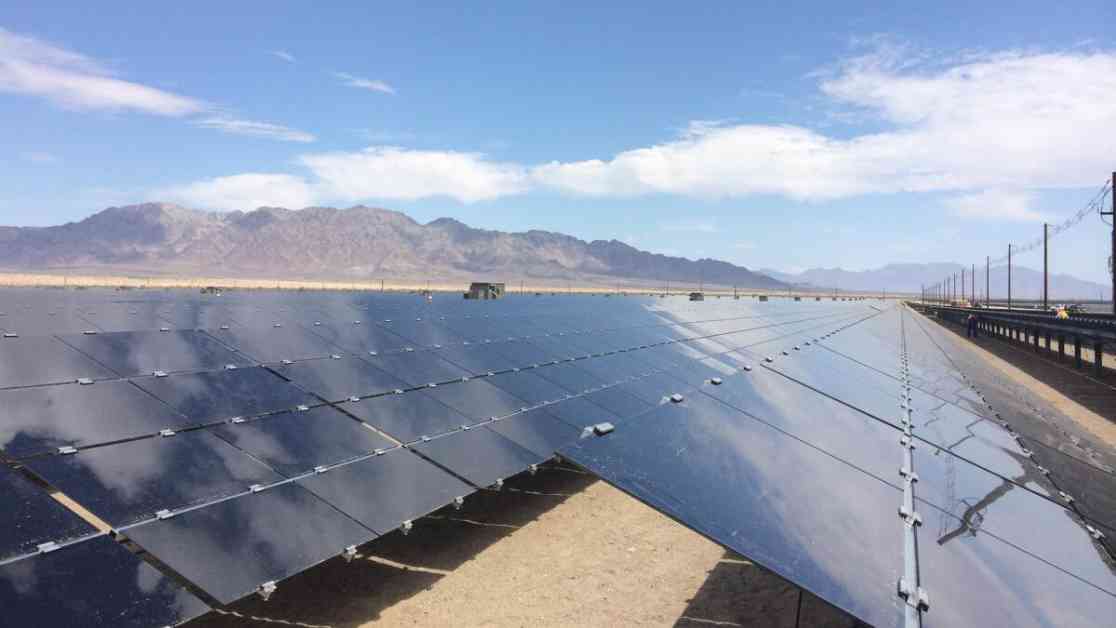Clean Energy Growth Offers Hope for Climate Change Mitigation
Climate change has long been viewed as a pressing global issue, with countries coming together annually to discuss potential solutions at climate change conferences. While the challenges posed by climate change are significant, there is hope on the horizon in the form of clean energy technologies. Solar and wind energy, in particular, have seen dramatic advancements in recent years, becoming more affordable and accessible than ever before. And the good news is that this trend is expected to continue, with clean energy technologies likely to become even more cost-effective and widespread in the near future.
Technological progress is often unpredictable, as it relies on innovations that are not always foreseeable. However, the rate at which certain technologies improve can be remarkably predictable. One of the most famous examples of this is Moore’s Law, which states that the density of microchips will double every two years. This prediction, made by Gordon Moore in 1965, has held true to this day, leading to exponential improvements in the efficiency and capabilities of computers.
Similarly, many other technologies, including renewable energy technologies like solar panels, lithium batteries, and wind turbines, have seen exponential cost reductions over time. For example, the cost of solar panels has dropped by an average of 10% per year, making them thousands of times cheaper than they were just a few decades ago. The same can be said for lithium batteries and wind turbines, which have also become significantly more affordable in recent years.
While some technologies, such as fossil fuels and nuclear power, have not seen the same level of cost reductions, clean energy technologies are continuing to improve at a rapid pace. The global deployment of these technologies is following a pattern known as an S curve, where adoption starts off slowly but then accelerates exponentially before leveling out. This trend suggests that key technologies like solar, wind, batteries, and green-hydrogen-based fuels are likely to see rapid growth in the coming years, eventually dominating the energy system.
One of the key advantages of clean energy technologies is their potential to address some of the most challenging sectors to decarbonize, such as aviation and long-range shipping. Green-hydrogen-based fuels, in particular, have the ability to provide long-term storage solutions for renewable energy sources like solar and wind, ensuring a reliable energy supply even when the sun is not shining or the wind is not blowing. While the technology is still in its early stages, the cost of green-hydrogen-based fuels has already decreased significantly, with projections suggesting that they could improve as rapidly as solar energy.
The transition to clean energy will undoubtedly come with upfront costs, but the long-term benefits are expected to far outweigh these initial investments. From a purely economic standpoint, the transition makes sense, even without considering the urgent need to address climate change. The sooner we invest in and adopt policies that facilitate the transition to clean energy, the sooner we will begin to realize the long-term savings and benefits that come with it.
In addition to addressing climate change, the transition to clean energy will also bring a host of other benefits, including improved energy security, reduced pollution, better health outcomes, less environmental damage, and more stable energy prices. While energy accounts for a relatively small percentage of global output, it is a critical component of the global economy, impacting all sectors. A rapid transition to clean energy will have far-reaching implications, reshaping global commerce and geopolitics.
This transition represents a prime example of “creative destruction,” a concept introduced by economist Joseph Schumpeter. While the shift away from fossil fuels may be challenging for some incumbents in the energy sector, it presents a significant opportunity for new players to enter the market and thrive. Those who are able to adapt to the changing landscape of the energy industry will prosper, while those who resist change may face obsolescence.
As we navigate this transition, it is essential to heed the lessons of Moore’s Law and other technological trends. By understanding the predictable patterns of technological advancement, we can better plan for and manage the shift to clean energy in a way that is both efficient and profitable. The future of energy is bright, and with continued investments in clean energy technologies, we can look forward to a more sustainable and prosperous world for future generations.



























